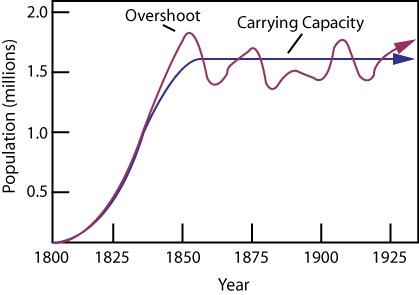How can carrying capacity impose limits on a population?
1 Answer
Well let's start off by thinking through the meaning of carrying capacity! From the word itself you can tell that it has something to do with limits because of 'capacity' ("the maximum amount that something can contain"). Now, 'carrying' means the support of something. Therefore, we now know that carrying capacity is the amount of something that can be supported in a specific region/area/place etc. Alright so your question was "How can carrying capacity impose limits on a population?" So let's put what we learned now into a context of a population!
Population growth varies on different factors such as how many new members are born, how long they live, how much resources present, how evenly distributed these resources are etc. Different limits present themselves to different populations because there are so many variables to consider. Once a population has reached a point where it is neither growing nor reducing, then it has reached it's carrying capacity. This is because said population would have reached its maximum number of members it can hold without depleting the resources present.
This is a great graph, if you're a visual learner, to study:

Try applying this concepts to animals, bacteria, or humans to see how it varies!


